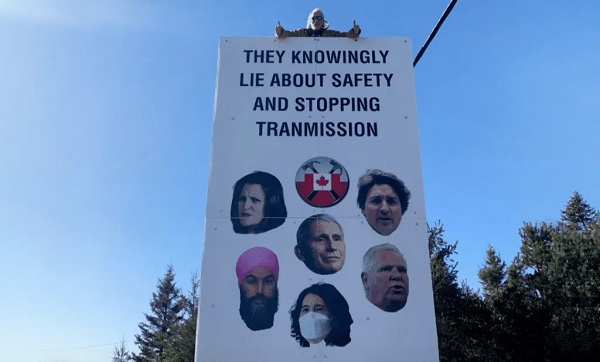Alberta
The Queens are crowned ACAC Champions for the first time in program history

Raymond, October 30 – After the final whistle was blown, history was made at the ACAC Women’s Soccer Championships. The Queens stormed the field off the bench to go celebrate with their teammates as they take home the gold and go off to nationals for the first time in program history.
As the Red Deer Polytechnic Queens soccer program entered the gold medal match of the Alberta Colleges Athletic Conference (ACAC) Soccer Championships, they were looking for their first championship in program history. In order to so, they had to get through the Concordia University Thunder in Sunday’s matchup in Raymond.
The Thunder are fourth in the Canadian Collegiate Athletic Association (CCAA) rankings and were ranked number one in the ACAC North Division at the end of the regular season with an 11-1-0 record. For the Queens, they finished off the season in first in the South Division with the same win-loss record and placed 12th in the nation in the final rankings before the championship.
Going into this match, the Queens have yet to concede the first goal all season and have not trailed since the 56th minute in their season opener against the SAIT Trojans way back on September 10.
The polytechnic does not have history on their side. In the last 15 seasons, a North Division team has won the ACAC Championship 13 times. SAIT (2021-2022) and Mount Royal College (2007-2008) in Calgary, now known as Mount Royal University, are the only teams who have won from the South Division in that time frame.
It was a usual southern Alberta October day with the wind blowing hard from the west. This made it difficult for the Queens and Thunder to play, especially on a pitch they are not so familiar with. The ball was rolling all over the place and each team had troubles with distributing the ball to their teammates.
Through the first 15 minutes, not much was going for either team as they were stuck playing in the middle third of the field with hardly any offensive zone time or any goal opportunities. It was the typical championship match the teams and spectators would expect which is a very physical and defensive game.
Queens Captain Alisha Coules (Bachelor of Science Nursing) was sent on a breakaway near the 20th minute, but she was just a step offside and forced to give it back to the Thunder for a free kick.
The biggest chance for the Thunder to open the scoring came at the 33rd minute mark. The ball was sent in from half and made it through the Queens back line. Third-year midfielder Brooke Lesoway struck the ball with one touch, but a sliding Queens keeper Abby Kotyk (Bachelor of Kinesiology) kept the ball out of her net as she stacked the pads.
At the half, it was all tied up at zero with each team minimalizing the goal opportunities for the opposing side and making it difficult for one another.

Queens Captain #9, Alisha Coules
During the half-time break, Head Coach Mazhiar Peyrow substituted Jenica Swartz for the ACAC South Player of the Year Sein Furuyama. 24 hours ago, Swartz ran in the 6 km race at the ACAC Cross-Country Championship in Edmonton where she would take home the bronze medal in the women’s division. With this, Swartz was not available for the Queens semi-final match yesterday against the Lethbridge College Kodiaks.
Furuyama was later substituted back into the match in the 75th minute for first-year midfielder Paige Kalbfleisch (Bachelor of Science Nursing).
The dead lock tie finally was broken in the 64th minute with the Queens striking first. It was some great pressure by Coules challenging the ball that was sent back to the Thunder keeper Monica Dickson that led to the goal. The captain from the Queens did not give up on the ball. She was able to sneak it through the keeper and it would slowly roll to the back of the net.
Coules was pressuring the opposing team and not giving them any time on the ball all game which finally paid off for her with a goal.
Moments later, the Queens would send in a ball into the Thunders box where Coules and Dickson collided hard with each other, leaving the Concordia keeper on the ground in pain for a few minutes.
A huge concern for the Queens as Furuyama went down hard and awkwardly bending her left leg back. It looked like a knee injury, and she was in a lot of pain, but she was able to walk off with the help of the trainers.
In stoppage time, a Thunder player went in for a tackle against Queens striker Corbynn Fujimoto and would hit her head on the turf with an incredible amount of force, leaving her still on the ground. The trainers would help her as much as they could and kept her head still. She needed immediate medical attention and an ambulance was called to stretcher the player off the field.
With these couple of injuries and having to wait for an ambulance, the game was delayed quite awhile before it would resume.
After the match finally restarted, Swartz and the Queens had the opportunity to put the Thunder down 2-0 in the late stages of the second half. The tall-striker from Red Deer was sent on a breakaway but could not shot it past the Thunder keeper as she stood tall in her net and made a sliding save.
Not as much time was added on as some of the players were expecting and the Queens came away with the gold medal and will await nationals in a couple weeks.
The player of the game went to Sofia Quinteros for her outstanding effort in the midfield, shutting down the Thunders offence but also contributing to her own team’s offensive effort.
At the end of the match Alisha Coules, Sein Furuyama, Kayla Yeo, and Estel Quinteros were named to the All-Tournament team. Midfielder Sofia Quinteros was named the Most Outstanding Player of the Tournament.
The CCAA Soccer Championships will be hosted by Champlain College Saint-Lambert in Quebec on November 9-12 at Seaway Park 3. But the teams will be arriving in the province on Monday, November 7.
Red Deer Polytechnic and the Athletics department congratulate the Queens on this gold medal and wish them luck in Quebec at nationals.
Alberta
Alberta Next: Alberta Pension Plan

From Premier Danielle Smith and Alberta.ca/Next
Let’s talk about an Alberta Pension Plan for a minute.
With our young Alberta workforce paying billions more into the CPP each year than our seniors get back in benefits, it’s time to ask whether we stay with the status quo or create our own Alberta Pension Plan that would guarantee as good or better benefits for seniors and lower premiums for workers.
I want to hear your perspective on this idea and please check out the video. Get the facts. Join the conversation.
Visit Alberta.ca/next
Alberta
COVID mandates protester in Canada released on bail after over 2 years in jail

Chris Carbert (right) and Anthony Olienick, two of the Coutts Four were jailed for over two years for mischief and unlawful possession of a firearm for a dangerous purpose.
From LifeSiteNews
The “Coutts Four” were painted as dangerous terrorists and their arrest was used as justification for the invocation of the Emergencies Act by the Trudeau government, which allowed it to use draconian measures to end both the Coutts blockade and the much larger Freedom Convoy
COVID protestor Chris Carbert has been granted bail pending his appeal after spending over two years in prison.
On June 30, Alberta Court of Appeal Justice Jo-Anne Strekaf ordered the release of Chris Carbert pending his appeal of charges of mischief and weapons offenses stemming from the Coutts border blockade, which protested COVID mandates in 2022.
“[Carbert] has demonstrated that there is no substantial likelihood that he will commit a criminal offence or interfere with the administration of justice if released from detention pending the hearing of his appeals,” Strekaf ruled.
“If the applicant and the Crown are able to agree upon a release plan and draft order to propose to the court, that is to be submitted by July 14,” she continued.
Carbert’s appeal is expected to be heard in September. So far, Carbert has spent over two years in prison, when he was charged with conspiracy to commit murder during the protest in Coutts, which ran parallel to but was not officially affiliated with the Freedom Convoy taking place in Ottawa.
Later, he was acquitted of the conspiracy to commit murder charge but still found guilty of the lesser charges of unlawful possession of a firearm for a dangerous purpose and mischief over $5,000.
In September 2024, Chris Carbert was sentenced to six and a half years for his role in the protest. However, he is not expected to serve his full sentence, as he was issued four years of credit for time already served. Carbert is also prohibited from owning firearms for life and required to provide a DNA sample.
Carbert was arrested alongside Anthony Olienick, Christopher Lysak and Jerry Morin, with the latter two pleading guilty to lesser charges to avoid trial. At the time, the “Coutts Four” were painted as dangerous terrorists and their arrest was used as justification for the invocation of the Emergencies Act by the Trudeau government, which allowed it to use draconian measures to end both the Coutts blockade and the much larger Freedom Convoy occurring thousands of kilometers away in Ottawa.
Under the Emergency Act (EA), the Liberal government froze the bank accounts of Canadians who donated to the Freedom Convoy. Trudeau revoked the EA on February 23 after the protesters had been cleared out. At the time, seven of Canada’s 10 provinces opposed Trudeau’s use of the EA.
Since then, Federal Court Justice Richard Mosley ruled that Trudeau was “not justified” in invoking the Emergencies Act, a decision that the federal government is appealing.
-

 MxM News2 days ago
MxM News2 days agoDiddy found not guilty of trafficking, faces prison on lesser charge
-

 Alberta2 days ago
Alberta2 days agoAlberta government records $8.3 billion surplus—but the good times may soon end
-

 Also Interesting2 days ago
Also Interesting2 days agoEndorphina Slots: High-Quality Games Now at Zoome Casino Canada
-

 Bruce Dowbiggin2 days ago
Bruce Dowbiggin2 days agoCanada Day 2025: It’s Time For Boomers To Let The Kids Lead
-

 Canadian Energy Centre2 days ago
Canadian Energy Centre2 days agoAlberta oil sands legacy tailings down 40 per cent since 2015
-

 Business2 days ago
Business2 days agoPrairie provinces and Newfoundland and Labrador see largest increases in size of government
-

 Agriculture2 days ago
Agriculture2 days agoCanada’s supply management system is failing consumers
-

 Economy2 days ago
Economy2 days agoTrump opens door to Iranian oil exports






